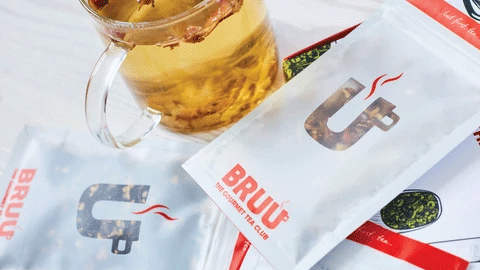Our July 2018 Box


These days most tea bags are filled with low-grade fannings or dust; tea leaves that have been chopped, ground and reduced to within an inch of their life. The essential oils which give tea its wonderful flavour, smell and medicinal benefits are left soaking into the chopping board. But they’re the least expensive grade of tea and why the big tea names favour them.
With loose tea, you are getting the full power of tea and happy leaves that are free to infuse without the restrictions of a tea bag. Yes, a tea bag is more convenient but maybe it’s time to steep and strain rather than dunking and dashing?
So why do tea bags still taste okay?
Well of the three main chemical senses, smell is the main determinant of a food items flavour. So a food's flavour can easily be altered by changing its smell while taste remains very similar. In the case of our trusty tea bag, this is done by adding smelly artificial flavours. I bet you're feeling cheated now by that bag of dust?
This one lesson is what led me to start BRUU. Make your own mind up, but if you still need convincing the proofs in the pudding as they say.
So where did your trusty tea come from?
Tea is often thought of as being a quintessentially British drink yet despite us drinking it for over 350 years the true history of tea goes much further.
The story of tea began in China. According to legend, in 2737 BC, the Chinese emperor Shen Nung was sitting beneath a tree while his servant boiled drinking water, when some leaves from the tree blew into the water. Shen Nung, a renowned herbalist, decided to try the infusion that his servant had accidentally created. The tree was a Camellia Sinensis, and the resulting drink was what we now call tea.
Since then tea was consumed throughout China and many large tea containers have since been found in tombs dating back to 206BC. Soon after it was introduced to Japan by monks studying in China. So at this stage in the history of tea, Europe was rather lagging behind. In the latter half of the sixteenth century, there were the first brief mentions of tea as a drink among Europeans. In 1606 the first consignment of tea was shipped from China to Holland but was reserved for the wealthy.
Britain always a little suspicious of continental trends had yet to become the nation of tea drinkers it is today. However, it was the marriage of Charles II to Catherine of Braganza that would prove to be a turning point in the history of tea in Britain. She was a Portuguese princess, and a tea addict, and it was her love of the drink that established tea as a fashionable beverage first at court, and then among the wealthy classes as a whole. Capitalising on this, the East India Company began to import tea into Britain, its first order being placed in 1664 for 100lbs of China tea to be shipped from Java.




Leave a comment